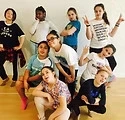Shy or reserved children often face hurdles in expressing themselves, especially in social or unfamiliar settings. Dance offers them a safe and joyful outlet where movement speaks louder than words. Within just a few weeks of consistent training at a ballet school for toddlers, even the most hesitant child begins to discover their voice—through graceful motion, music, and self-expression. Many studios offer a wide spectrum of options, including ballet and hip hop dance classes, so children can find the style that best suits their personality and rhythm.
Building Confidence Through Structure and Play
The earliest steps into a dance studio set the tone for long-term confidence. A well-balanced dance curriculum merges structure with imaginative play, especially important for toddlers and young children aged 2–7. In a nurturing setting, children learn to follow instructions, explore rhythm, and gradually build discipline. Teachers in professional environments, such as those found at All Star Studios in Forest Hills, NY, use an encouraging approach to ease children into the discipline of dance without overwhelming them.
For toddlers, the consistency of class routines—like starting with a circle warm-up or moving into a favorite “free dance” song—creates a sense of security. Over time, the ritual of showing up, trying something new, and receiving positive feedback cultivates resilience and motivation. As students begin to recognize their own improvement, their self-image strengthens.
Emotional Expression Through Movement
Movement becomes a powerful emotional language for young dancers. Ballet encourages grace, precision, and musicality, giving children tools to express calm, focus, and emotion with their bodies. Hip hop, by contrast, fosters playfulness, rhythm, and individuality. Together, these forms offer an enriching balance that helps children navigate a spectrum of feelings, from joy to frustration.
Young children might struggle to verbalize complex emotions. Dance allows them to channel energy, anxiety, or happiness into purposeful motion. For instance, a child dealing with separation anxiety may find comfort in learning a ballet sequence that emphasizes flow and calm. Conversely, a high-energy child might thrive in freestyle segments of hip hop where bold movement builds self-trust and spontaneity.
Social Courage and Team Connection
One of the hidden gems of dance training lies in how it nurtures social skills. Children learn to take turns, listen, and work collaboratively in group routines. In ballet and hip hop dance classes, dancers rely on one another for timing, spatial awareness, and synchronization. These soft skills often translate into greater ease in classroom settings, peer interactions, and even public performances.
Dance helps children develop eye contact, voice projection (during introductions or performances), and body awareness—all critical for building social courage. In time, previously shy students begin to volunteer for solos, lead warm-ups, or simply raise their hand with more confidence in other areas of life.
Physical Competence Reinforces Mental Growth
Mastering a plié or nailing a hip hop combination gives children a sense of accomplishment. That physical mastery builds internal belief. Whether they’re balancing in ballet’s first position or moving freely to a pop beat in hip hop, the act of doing something challenging—and succeeding—helps children reshape their self-perception.
Physical progress in dance also reinforces resilience. Students learn that growth happens gradually, through repetition and patience. This mindset is particularly impactful for reserved children who might avoid risk-taking in other settings. With each new skill acquired, they begin to embrace effort, curiosity, and confidence.
The Role of a Supportive Dance Environment
Environment matters immensely when nurturing young dancers. At dance schools like All Star Studios, trained professionals balance technical training with imagination. Teachers use child-friendly language, fun props, and music genres that connect with young minds. These strategies not only build coordination but also nurture creativity.
Moreover, trial classes remove pressure and invite children into the space at their own pace. The emphasis on individual growth, rather than comparison or competition, ensures that each dancer—shy or bold—feels seen and celebrated. With small class sizes and thoughtful feedback, instructors become trusted mentors in a child’s growth journey.
Freestyle as Freedom: A Path to Self-Discovery
Perhaps the most transformational moment for a child occurs when they step into freestyle movement. This moment, often introduced in hip hop classes, gives children full ownership of their expression. There are no set rules, no mirrors to please—just movement, rhythm, and their imagination. For reserved children, freestyle becomes a form of empowerment. It teaches them that their unique style, energy, and ideas matter.
Parents often notice significant personality shifts after a few months of dance training. Children start initiating conversations, standing taller, or expressing their preferences more openly. These changes don’t come overnight, but they unfold beautifully in a supportive environment rooted in artistic exploration and gentle structure.
Conclusion: A Dance Journey Toward Confidence
Confidence doesn’t just appear—it grows step by step, leap by leap. A ballet school for toddlers offers more than foundational technique; it becomes a space where self-worth, imagination, and bravery are nurtured. Through guided instruction and expressive freedom, children discover how movement helps them speak, feel, and connect. And as they glide from the first position in ballet to the bold moves of freestyle, their transformation becomes evident—not just on stage, but in life. For families considering the benefits of dance, ballet and hip hop dance classes provide the perfect balance of discipline and joy to help children bloom into their most confident selves.


